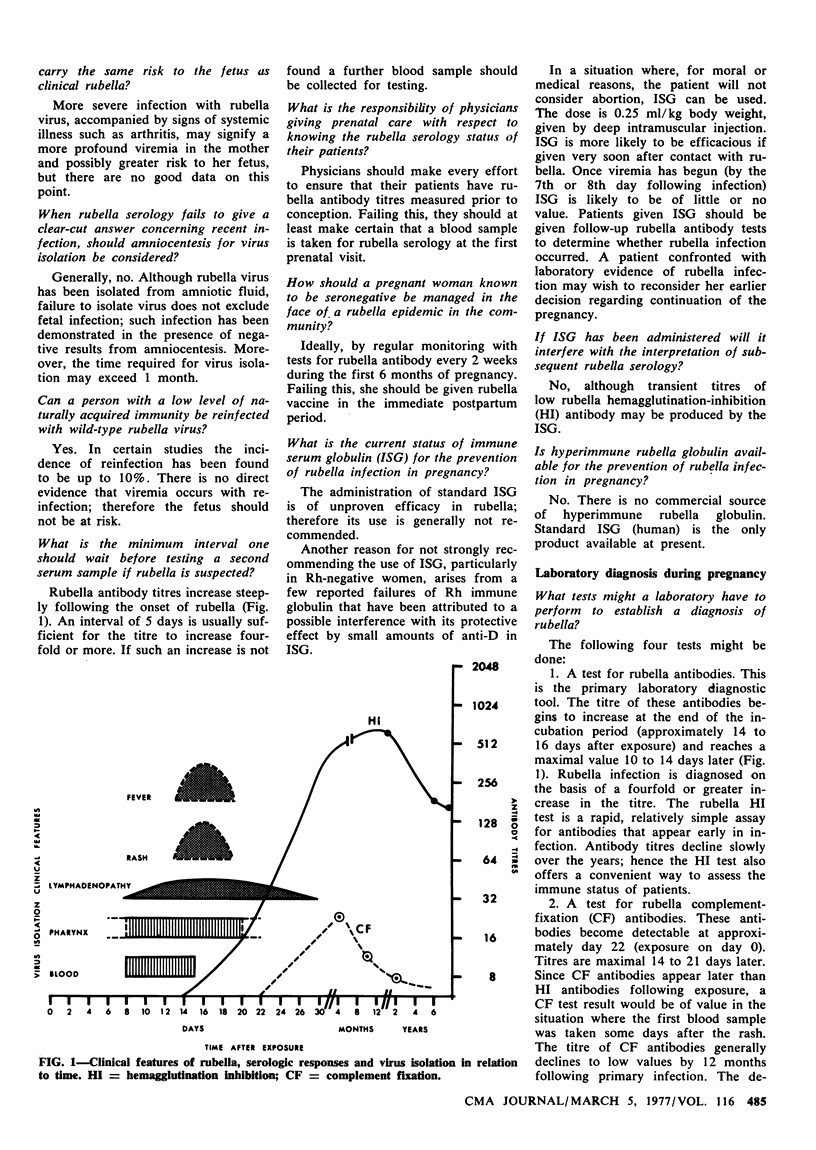Abstract
Despite the availability of rubella vaccine the incidence of the congenital rubella syndrome has been increasing in certain regions of Canada. Perhaps this is not surprising in view of the known irregular cyclic activity of rubella virus in a community and the fact that the percentage of seropositive women of childbearing age has not changed appreciable since the vaccine was introduced. Clearly vaccine is not being administered to sufficient numbers of women at risk. Until a much higher percentage of women of childbearing age possess rubella antibody, the costly problem of congenital rubella syndrome is likely to be with us. Common rubella problems relate to four categories: the exposed pregnant woman, laboratory diagnosis, the infant with suspected congenital rubella and the vaccine. One of the most common questions about the vaccine is the following: Can recently vaccinated individuals disseminate vaccine and infect seronegative contact? The answer is No.
Full text
PDF




Selected References
These references are in PubMed. This may not be the complete list of references from this article.
- Iwakata S., Rhodes A. H., Labzoffsky N. A. Laboratory diagnosis of rubella virus infections. Can Med Assoc J. 1973 Apr 7;108(7):894–passim. [PMC free article] [PubMed] [Google Scholar]


